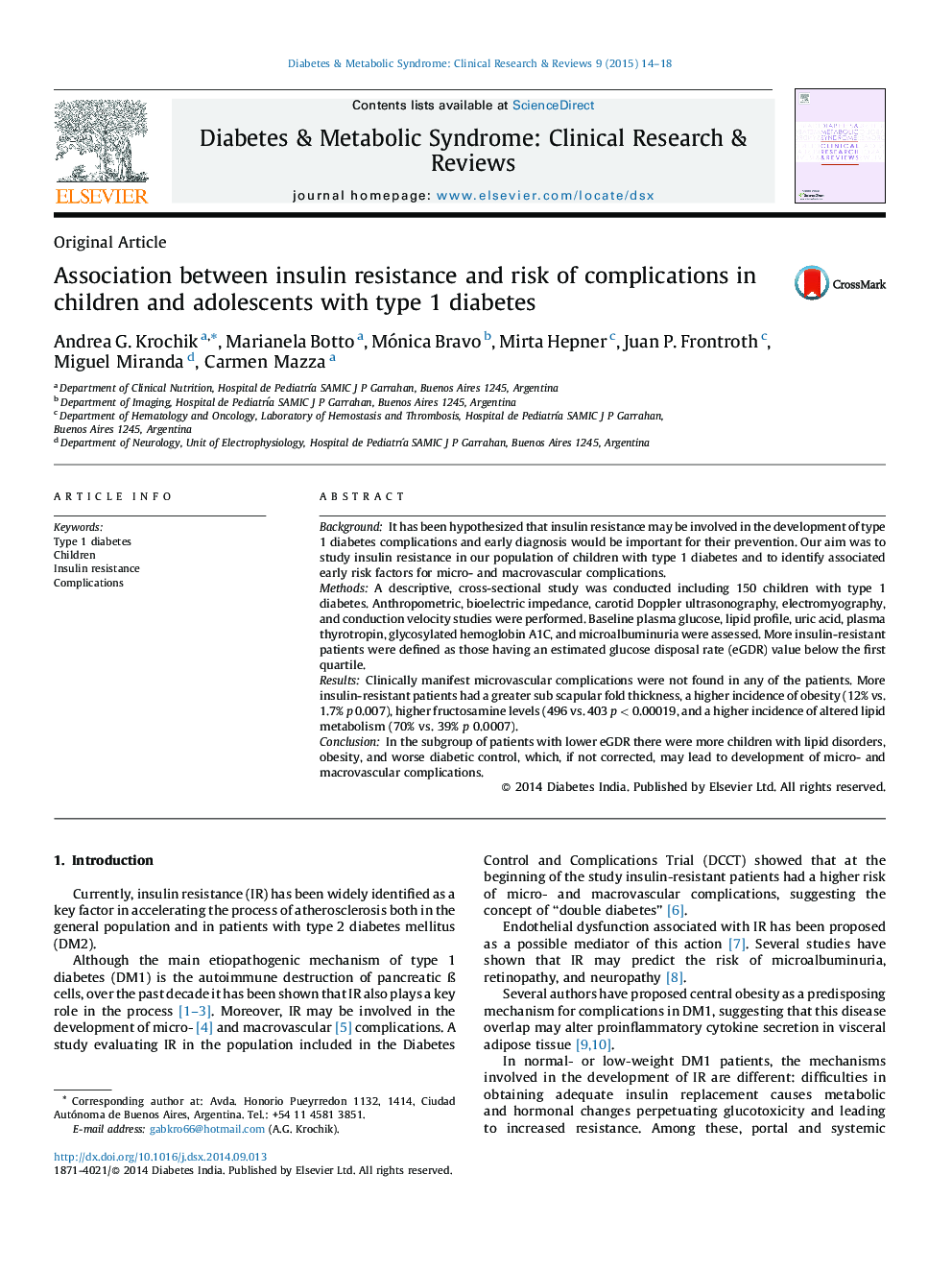| کد مقاله | کد نشریه | سال انتشار | مقاله انگلیسی | نسخه تمام متن |
|---|---|---|---|---|
| 2910142 | 1174607 | 2015 | 5 صفحه PDF | دانلود رایگان |
BackgroundIt has been hypothesized that insulin resistance may be involved in the development of type 1 diabetes complications and early diagnosis would be important for their prevention. Our aim was to study insulin resistance in our population of children with type 1 diabetes and to identify associated early risk factors for micro- and macrovascular complications.MethodsA descriptive, cross-sectional study was conducted including 150 children with type 1 diabetes. Anthropometric, bioelectric impedance, carotid Doppler ultrasonography, electromyography, and conduction velocity studies were performed. Baseline plasma glucose, lipid profile, uric acid, plasma thyrotropin, glycosylated hemoglobin A1C, and microalbuminuria were assessed. More insulin-resistant patients were defined as those having an estimated glucose disposal rate (eGDR) value below the first quartile.ResultsClinically manifest microvascular complications were not found in any of the patients. More insulin-resistant patients had a greater sub scapular fold thickness, a higher incidence of obesity (12% vs. 1.7% p 0.007), higher fructosamine levels (496 vs. 403 p < 0.00019, and a higher incidence of altered lipid metabolism (70% vs. 39% p 0.0007).ConclusionIn the subgroup of patients with lower eGDR there were more children with lipid disorders, obesity, and worse diabetic control, which, if not corrected, may lead to development of micro- and macrovascular complications.
Journal: Diabetes & Metabolic Syndrome: Clinical Research & Reviews - Volume 9, Issue 1, January–March 2015, Pages 14–18
